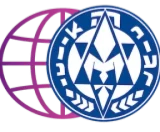By: Diego Bieber, Mazkirut Olamit Hanoar Hatzioni B’Israel
Have you heard about putting an orange on the Keara of the Pesach Seder? Surely, the vast majority of you have not. To be honest, until recently, I had not either. Apparently, this tradition began with Dr. Susannah Heschel when, after a lecture, a man stood up to furiously attack feminism within Judaism, claiming that “a woman standing on a bimah of a Beit Knesset is like an orange in the Keara of Pesach”. From that day, as a sign of support for women in Jewish life, many people decided to put an orange on their Pesach tables. Surprisingly, over time, the symbolism of this orange ceased to be related solely to this specific example and
was broadened to become an element which symbolizes the inclusion of the ones who do not feel properly represented, thus granting them, in a way, the place they deserve at the Pesach table symbolically and within Am Israel in practice.
Pesach is the Chag of liberation, in which we render thanks for our own national liberation. At the same time, this is an opportunity to pay attention and observe those around us, and to try to help, especially, those who are not free – who are
still “chained”.
As we know, our people were enslaved, and we were liberated by the extended arm of God. But God did not act alone. God needed (and still needs) humans as allies to make liberation a reality. For this reason, it is essential to ask ourselves in this Chag: Who needs that extended arm and open hand? What new symbols and rituals can we bring to the Seder to expand the meaning of the Chag in a way that allows us to be more aware of the needs of others in present day?
We, chaverim of Hanoar Hatzioni, where humanism and pluralism are fundamental principles, have the duty to educate our chanichim to be sensitive to these questions and act in search of answers to “the slavery of the twenty-first century”, in all its forms. It is our duty as educators of Hanoar Hatzioni and as the agents of change we aspire to be to use every moment to make a difference– trying to convey the essence of Chag Pesach, even with simply a different symbol that draws the attention and forces us to go beyond the traditional Seder and the story that occurred thousands of years ago in faraway Egypt to focus for a few minutes
on the modern day “slaves” and our place in the task of “liberating” them.
It is up to each one of us to find the significance that we want to give to our “orange on a Pesach plate”, and to be able to transmit it to the people around us.
Because as the Haggadah says: B’chol dor vador chayav adam lir’ot et atzmo keilu hu yatza mimitzrayim” (In every generation, each human being must see himself or herself as if he or she personally experienced the Exodus from Egypt).
Chag Sameach!










